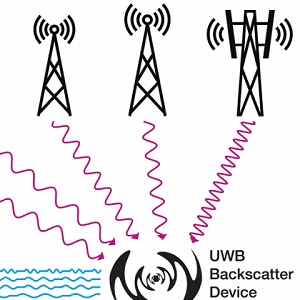 Communication costs dominate the energy consumption, and ultimately limit the utility, of low power devices and sensor nodes. Backscatter communication based on deliberate and ambient sources has the potential to radically alter this paradigm by offering two to three orders of magnitude better communication efficiency (in terms of nJ/Bit) then conventional radio architectures. Initial work on ambient backscatter shows promising results but has focused on narrow band operation in well controlled laboratory settings.
Communication costs dominate the energy consumption, and ultimately limit the utility, of low power devices and sensor nodes. Backscatter communication based on deliberate and ambient sources has the potential to radically alter this paradigm by offering two to three orders of magnitude better communication efficiency (in terms of nJ/Bit) then conventional radio architectures. Initial work on ambient backscatter shows promising results but has focused on narrow band operation in well controlled laboratory settings.
The goal of this work is to enable the ubiquitous deployment of ultra-low power nodes that communicate via ambient backscatter to wired Universal Backscatter Readers, in real-world environments. This is accomplished through ultra-wideband backscatter techniques that leverage the breath of commercial broadcast signals in the 80 MHz to 900 MHz range from FM radios, digital TVs, and cellular networks. Additionally the use of powered Universal Backscatter Readers allows a network of ultra-low power nodes to operate on ambient carriers as low as -80 dBm, which is typical for indoor home and office environments. For the first time we demonstrate the simultaneous use of 17 ambient signal sources to achieve node-to-reader communication distances of 50 meters, with data rates up to 1 kbps.